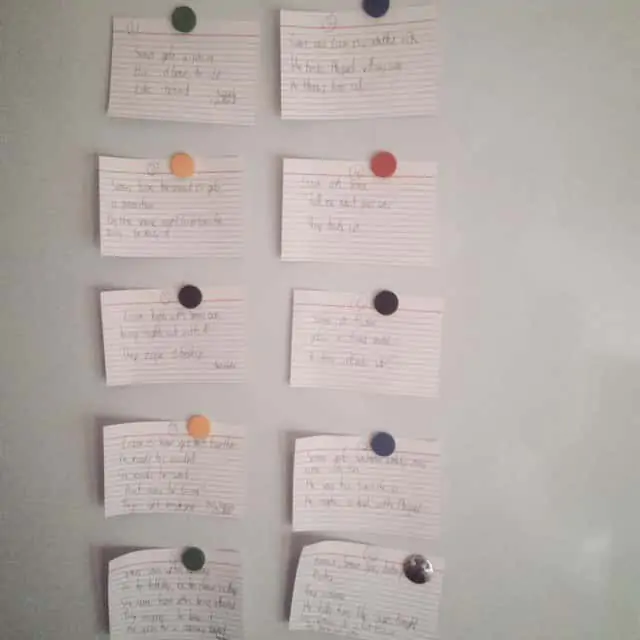When you’re tasked with writing a compare and contrast essay, it can be tough to know where to start. Learn more from this article.
A compare and contrast essay showcases your critical thinking ability, showing that you’re able to explore multiple topics from different viewpoints while still drawing your own conclusions. Compare and contrast essays are a common requirement in high school and college English and writing classes.
You must begin with a brainstorming process, then move forward by organizing your ideas with an essay outline that follows your desired (or required) essay structure. Your outline will help you organize your main points, helping you to develop supporting arguments, an essential part of a good compare and contrast essay.
Here, we’ll explore each step of writing a compare and contrast essay, from the pre-writing process to the introductory paragraph to ensuring that your arguments are cohesive and concise.
| IMAGE | PRODUCT | |
|---|---|---|
|
Best Essay Checker
 |
Grammarly
|
Claim My Discount → |
|
Best Alternative
 |
ProWritingAid
|
Claim My Discount → |
Contents

1. Begin With A Brainstorm
If you haven’t already, choose the two compare and contrast essay topics. There’s no need to think about the organizational structure of your essay yet. Your brainstorming process is simply an aid to help you understand your thoughts before you begin writing your persuasive essay or research paper.
It’s wise to write freely during the brainstorming process. There’s no need to censor yourself or try to figure out which of your ideas make sense. Instead, simply let one thought lead to another as you work through the points in your mind.
If you’re struggling to get started with brainstorming, try writing a list of words that come to mind when you think about the two works or topics you’re comparing and contrasting. The Academic writing process takes time, and getting your ideas onto paper is often the first step in moving forward with what you have to say, no matter what type of essay you’re writing.
If you want your brainstorming to take on a specific form—like a list or a mind map that connects one idea to another—feel free to do so. However, if you’d prefer to let your mind flow freely from one idea to another, it may be easier to make a list or write in paragraph form.
If you have time, take a step back from the writing process after you’re done brainstorming. You may find that taking some time away can help you think of more you’d like to add to your essay. You may also find that walking away from your brainstormed thoughts enables you to come back with a clearer head that allows you to better make connections between your ideas.
If you need some inspiration to help you get started, check out some great compare and contrast essays here.
2. Create A Venn Diagram
Next, you may want to create a visual aid to guide you as you write your comparison essay. Then, using the information you wrote down during your brainstorming process, begin to examine the similarities and differences between the two works or ideas you’re using as the basis for your essay.
Creating a Venn diagram is simple. Draw two slightly overlapping circles and label each circle with one of your essay topics. Where the circles overlap, write points of comparison—things that both of your topics have in common. In the other areas of the Venn diagram, write points of contention—areas in which your topics differ.
As you develop your Venn diagram for your compare and contrast paper, try to place an equal number of examples in each area of the diagram. This will help you keep a balance between points that your two topics have in common and points that explain how they differ.
When you’re making your Venn diagram, think about your main argument. Feel free to cross out and change your ideas — during the pre-writing stage — you have plenty of time to switch up your arguments without having to spend too much time rearranging your thought process.
3. Write A Thesis Statement
Many writers in high school and college feel apprehensive at the thought of writing a thesis statement, but fear not—we’ve got you covered.
A thesis statement is more than an introduction. It’s the main point that guides your writing. So when you begin to think about your thesis statement as the compass that points your paper in the right direction, it’s less scary than thinking about it as the main point of your paper that you need to get right before you can move on.
Here’s what a thesis statement could look like for an essay that answers the question, “how does literature address the concept of The American Dream?”
Example thesis: The failed pursuit of The American Dream is a prominent theme used to define the protagonists in both The Great Gatsby and Death of a Salesman.
Remember, you can always come back and change your thesis statement down the line as you go step by step through the essay writing process and develop your arguments. While writing, you may find that you talk yourself out of your thesis—and that’s ok. There’s nothing wrong with returning to the beginning, making some changes, and moving forward.
Your thesis statement is the main point of your essay and should appear early in the introduction of your paper (don’t worry—we’ll come back to the introduction later). Writing your thesis statement before you move onto the outline of your essay helps you develop the purpose of a compare and contrast essay, allowing you to create cohesive arguments that repeatedly refer the reader back to the main point.
If you’re struggling to figure out your thesis statement, go back to brainstorming or your Venn diagram. Jot down some additional ideas, then return to your thesis statement. You’ll want to think of your pre-writing process and your thesis statement as a road map to guide you through your outline and the rest of your writing process.
4. Draft Up An Outline

After your thesis statement is complete, it’s time to begin developing the point structure of your essay. Go back to your Venn diagram and see if you can pick out a few main points (three to five ideas) that you’d like to highlight as you write your essay. You’ll use these points to form your body paragraph.
After you write down each main point that you’re going to make as you write your essay, it’s time to develop supporting arguments. It can be helpful to find specific examples from the text that you’ll use to support your arguments while you’re making your outline. Doing so can help you solidify your ideas before you move on to actually writing the body paragraphs.
The more time you can spend on your outline, the better. When your outline is solid, you’ll be able to spend most of your writing time fully developing your ideas and writing in a way that pulls the reader to your side of the argument. Then, as you begin to look for examples from the text(s) to support what you have to say, be sure you’re beginning a citations section to attribute quotes and ideas. Getting a head start on your citations section before you start writing your body paragraphs can save you time and headaches down the line in your writing process.
5. Develop Body Paragraphs
Your argument for your first point should be strong. Remember, the first subject you bring up in your compare and contrast essay will help the reader decide whether they’d like to continue hearing what you have to say. Therefore, your argument must be solid and well-supported with examples from the text(s). If you need some help understanding how to structure a compare and contrast essay body paragraph, take a look at these essay examples to help you move forward).
Strong transitions from one body paragraph to another are essential. Still, it’s ok if you want to focus on building up your body paragraphs with supporting arguments before you move on to transitions.
There’s no need to stay too focused on grammar and mechanics as you’re writing body paragraphs. This stage of the writing process is about explaining your ideas in a way that makes sense to the reader. After you write your conclusion, it will be time to begin the proofreading process, where you’ll be able to take all the time you need to ensure that your paper is technically correct.
After you’ve written your body paragraphs, go back and see if your ideas easily flow. Add transition sentences, leading the reader from one idea to the next. You may find that you need to re-order your paragraphs or that you want to add additional supporting arguments. Reading your body paragraphs aloud can help you understand whether they’ll flow nicely for your reader.
6. Write The Introduction And Conclusion
After your body paragraphs are complete, return to the top of your paper to write your introduction. Your introduction offers your reader an overview of what they will learn about in your essay. Many writers find it easier to write an introduction after body paragraphs are complete.
Your introduction should give readers a quick idea of what they’re going to learn, but it shouldn’t give away all of your supporting arguments. Be sure that your introduction includes your thesis statement and is written with language that makes your reader excited to hear what you have to say.
After you complete your introduction, summarize your ideas with a conclusion. The end of your essay should offer a summary that recaps what your readers learned and should include a re-statement of your thesis.
7. Remember To Proofread

After you’ve written your introduction and conclusion, you’ll need to go back to the start of your essay and proofread. It’s wise to take a few different passes at the proofreading process, focusing on various aspects of the essay (such as flow, factual information, grammar, mechanics, transitions) each time.
Much like the pre-writing process, if time permits, it’s smart to take an hour (or a day) away from your essay before completing the proofreading process. A fresh perspective can help you notice errors that would have otherwise gone unnoticed.
The Final World On How To Write A Compare And Contrast Essay
Writing a compare and contrast essay is no small undertaking, but taking your time with the pre-writing process can help speed up your work. The unconventional approach of writing your introduction after completing your body paragraphs can help you draw your reader in, making them curious about your arguments. Remember, when you’re finished writing, go back and read your work out loud, checking for flow and cohesiveness.
FAQs On How To Write A Compare And Contrast Essay
What’s a thesis statement in a compare and contrast essay?
A thesis statement shares the argument that you will prove to your reader throughout your essay.
How long is a compare and contrast essay supposed to be?
If you’re completing a compare and contrast essay for a class, you’ll likely have an assigned word count or page number count that you’re required to hit. If you don’t have a requirement, stick to an introduction, three to five body paragraphs, and a conclusion